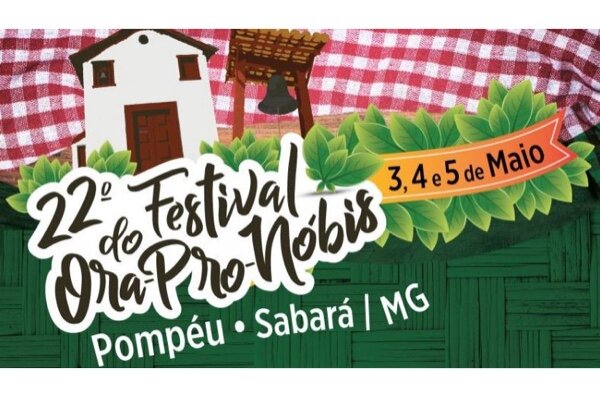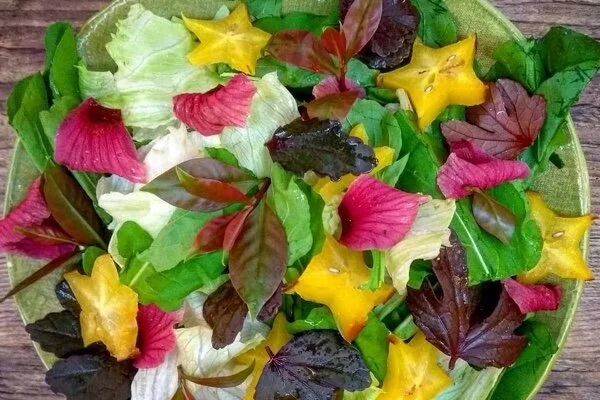Many people have asked us why we selected the Pereskia aculeata plant to produce our first plant protein ingredients.
The main reason is that Pereskia is a safe and natural superfood from which there is the potential to create incredibly sustainable food ingredients.
A traditional Brazilian vegetable
Pereskia has a long history of consumption in Brazil, and is popularly known as ‘ora-pro-nobis’ or ‘pray-for-us’ in Portuguese. Ora-pro-nobis is a traditional and celebrated food that has been consumed since the 17th century as a green leaf vegetable.
The name, ora-pro-nobis, comes from a popular Brazilian legend, where villagers harvested the leaves from Pereskia plants that were used as a natural fence at a church. During mass, poor villagers collected the leaves while the priest was occupied inside the church delivering the sermon.
Pereskia, ora-pro-nobis, a celebrated local ingredient
The Brazilian town of Sabará situated in the state of Minas Gerais is considered the national capital of ora-pro-nobis. In Sabará, local chefs, smallholder farmers, foodies and the local community gather every year to celebrate their local ingredient over music and culinary specialties in an Ora-pro-nobis Festival.
The festival has been running now for more than 20 years and culminates in a cooking contest using ora-pro-nobis, Pereskia.
How Pereskia supports regenerative agriculture
One of the benefits of farming Pereskia is that it is a perennial crop with a robust rooting system that can reach 5 meters deep. Perennial plants are able to exchange nutrients and moisture with deeper layers of the soil compared to annual crops.
This contributes to soil health and also makes Pereskia a more resistant crop to extreme weather events, such as droughts and floods.
Furthermore, as a perennial plant Pereskia contributes to capturing carbon under and above the soil in a superior volume and on a permanent basis. This helps to reset our global carbon balance and helps decrease the environmental impact of our agri-food system.
A high-yield and drought tolerant crop
Compared to other mainstream plant protein crops, Pereskia is a high-yield, drought tolerant cultivar. It can be farmed under regenerative conditions and contribute to sustainably feeding our ever growing population.
Pereskia crops are highly productive and can yield up to 2.5 tonnes of pure protein per hectare. This is twice as much as standard soy crops, which is currently the most productive mainstream plant protein crop.
Also, Pereskia’s water requirement is low, needing 5 times less water than rice to grow. These characteristics make Pereskia an efficient crop in terms of natural resource usage. It helps to free up land and water for forests and the regeneration of wild biomes.
An alternative income stream for farmers
The environmental benefits, together with its high yield make Pereskia an attractive crop for farmers looking to diversify their farms with more resilient and sustainable crops. Not only does it minimise their environmental footprint, Pereskia also helps to de-risk their income stream with a hardy drought tolerant crop.
Introducing Pereskia, a sustainable superfood
Pereskia is a highly nutritious green leave vegetable that can be eaten as a raw salad leaf or cooked as a green vegetable.
Pereskia is a sustainable superfood that is naturally rich in protein, minerals, fibre and vitamins, and is popularly known in Brazil as the ‘poor man’s beef’. It’s commonly consumed as a whole green leaf vegetable in salads or in cooked meals. Pereskia has a smooth flavour and soft texture and is eaten in Brazil for its well-balanced nutritional properties.
This table shows the nutritional composition of 100g of dry Pereskia leaves.
Scientific research has shown that Pereskia protein is high in essential amino acids, making it a high quality protein.
Furthermore, it is a rich source of minerals, containing iron and calcium, as well as Vitamin C, which helps to boost iron absorption in our body.
As such, Pereskia is highly recommended by dietitians and nutritionists. It's commonly eaten in Brazil by individuals seeking healthy and sustainable sources of proteins, fibre and minerals.
Our mission, as The Leaf Protein Company, is to unlock Earth’s most abundant and sustainable source of protein: green leaves. We’re passionate about this because our current agrifood system is responsible for 25% of all human generated greenhouse gas emissions. So we feel the urgency to act now to change our food systems in order to help fight climate change. Find out more about our Pereskia Protein Concentrate and its food applications on our website.






